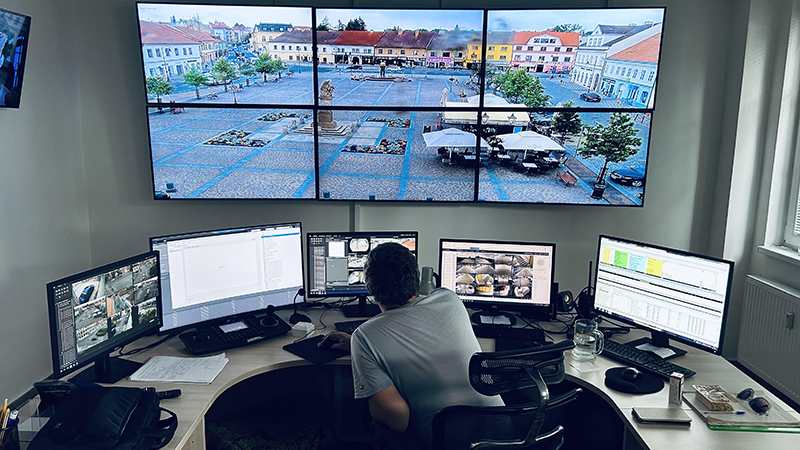 Brandýs nad Labem-Stará Boleslav in Czechia is a pair of towns spread over both banks of the Elbe River in the Prague-East District. The City Council is passionate about improving the quality of life of its citizens, and safety is a big part of that.
Brandýs nad Labem-Stará Boleslav in Czechia is a pair of towns spread over both banks of the Elbe River in the Prague-East District. The City Council is passionate about improving the quality of life of its citizens, and safety is a big part of that.
In 2006, construction began on the municipal camera surveillance system (MKDS). There are multiple camera points across the city, including Komenského Square, the bus station, the town hall, and the Garden ice rinks. As part of the wider public safety agenda, the City Council wanted to install ANPR cameras to better understand the flow of vehicles entering and exiting specific areas of the city to inform traffic management. This data can also be used in spatial planning.
With its AI-powered Road AI and RoadWatch functions, the city turned to Hanwha Vision to provide ten PNO-A9081RLP and ten XNO-6123R/RW cameras, alongside an SSM recording server, decoders, the TID-600 intercom and more. It was a new installation that needed to provide control room staff and frontline police officers with footage of vehicle makes, models, colours and licence plates. The Police of the Czech Republic and crisis management authorities also have access to the system as part of their close cooperation with the city.
The PNO-A9081RLP offers Brandýs nad Labem-Stará Boleslav an all-in-one solution featuring ANPR, Make/Model/Colour Recognition (MMCR) and vehicle classification analytics – all pre-installed, ready to use and licensed. This made deploying the cameras easy so the city could get up and running quickly with its traffic surveillance. The cameras cover one lane of traffic at speeds up to 70km/h.
With eyewitness accounts quite often being inaccurate or incomplete, and particularly so with regards to vehicle licence number plates, the ability to search for vehicles by make, model and colour is of great help to investigating teams when looking to find footage of a vehicle involved in an incident. Similarly, with criminals frequently swapping the licence number plates on vehicles in order to avoid ANPR identifying them as stolen, police can use the make, model and colour search criteria to cross-reference against reports of stolen vehicles.
Since the launch of the system, several stolen vehicles and criminals have been detected. Vehicles are also classified into seven vehicle types (car, SUV, van, LCV, truck, bus or motorcycle), allowing operators to provide quicker responses to traffic incidents or reports of dangerous driving. Moreover, operators can gain long-term insights into road and parking usage, with planners able to take any trends into account when considering widening roads or creating new bus and cycle lanes.
Meanwhile, the XNO-6123R/RW cameras come pre-installed with RoadWatch ANPR, which gives an all-in-one ANPR and direction detection solution. It can cover one lane of traffic travelling up to 90 km/h and 30m IR (infrared).
Eventually, the plan is to connect the outputs from the two camera models to police databases to further improve incident response times and aid investigations. Currently, the city police can see what’s happening on a video wall or with remote footage on their phones and tablets.
Since the traffic solutions were installed, the city police have used the footage for forensic investigations into crimes committed. The CCTV system is also a visible deterrent for dangerous drivers and other traffic violations.

